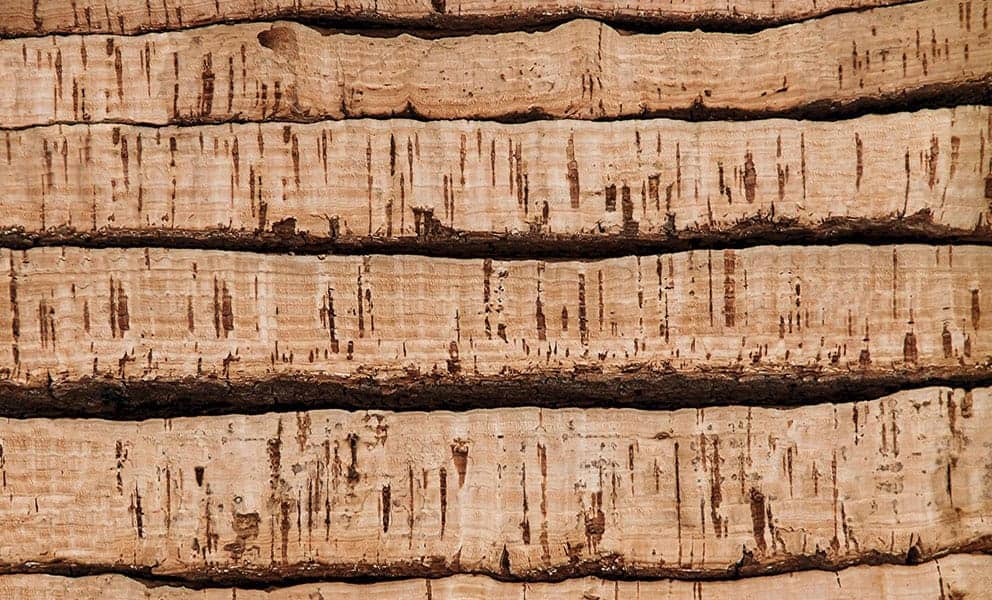
Read on as we take a closer look…
We’ll start by getting a bit technical, looking at the unique structure of cork that’s behind its physical properties. Cork is a cellular material, which simply means it contains numerous cells throughout its mass.
More specifically, cork is structured like a foam with a regular honeycomb arrangement throughout the tissue. According to research by NC State University, the cells which make up this foam have hollow interiors filled with air.
The same research outlines the two main chemical components of cork as suberin (53%) and lignin (26%). Both of these provide their own kind of protection, with suberin known for insulation and sealing and lignin linked to rigidity and anti-rotting properties.
The unique structure described above gives cork a number of physical properties that are hard to find together in other materials…
Cells in cork are small and closed to eliminate convection. The gas enclosed in its cells also has low thermal conductivity. As a result, it’s very hard for heat to pass through. The same qualities make it highly resistant to fires too.
Cork is practically impermeable for liquids, thanks to its hexagonal air-filled cell walls which are bolstered by suberin. In simple terms, that means water can’t pass through, making it ideal for waterproofing.
Because its cells are hollow, the majority of cork is made up of air. That also adds buoyancy to the physical properties of cork. It also makes cork impressively flexible, as it can be compressed without losing its original shape.
Despite being lightweight and low-density, cork is still durable and hard-wearing. Thanks to the inclusion of lignin in its chemical composition, the material is naturally long-lasting and strong. Its flexibility also means it won’t incur long-term damage from impact or compression.
Because it’s non-dense and porous, cork is also great at absorbing sound. This natural physical property prevents sound from passing through anything that is lined with cork.
The physical properties of cork make it a great material for use on internal and external walls. It’s waterproof to keep out rain and avoid damp, insulative to keep houses warm, flexible to avoid cracking, and even sound-reducing for a peaceful environment.
All of that and more makes SprayCork the ultimate choice for your external render or internal wall coating. The cork-based coating can be spray applied for a smooth, uniform and high-performance coating inside or outside your home.
To find out more or arrange a quote from a local Approved Applicator, simply get in touch with the Corksol team.
"*" indicates required fields